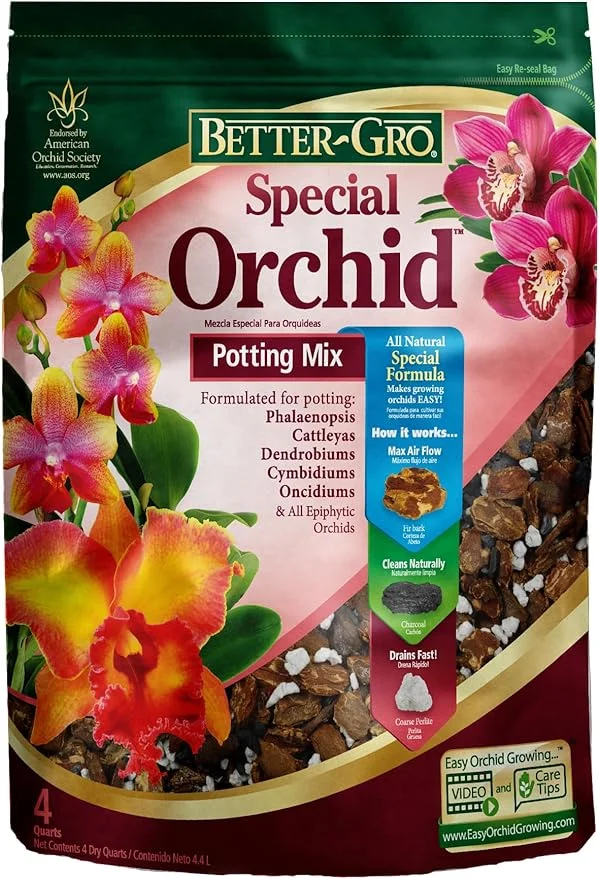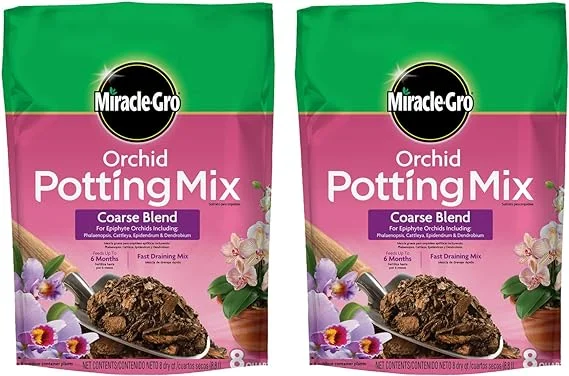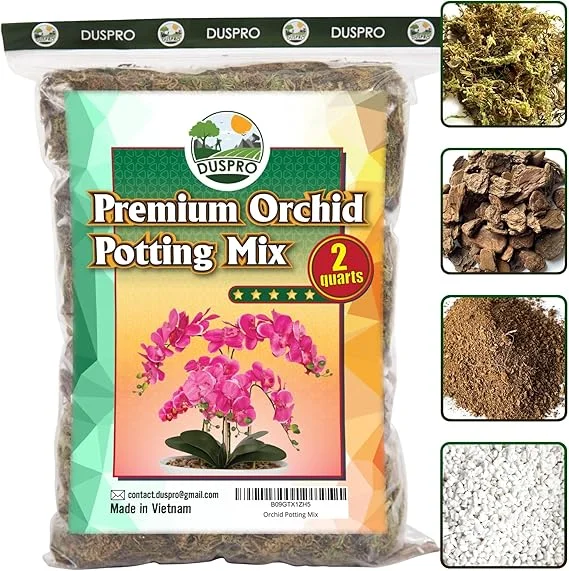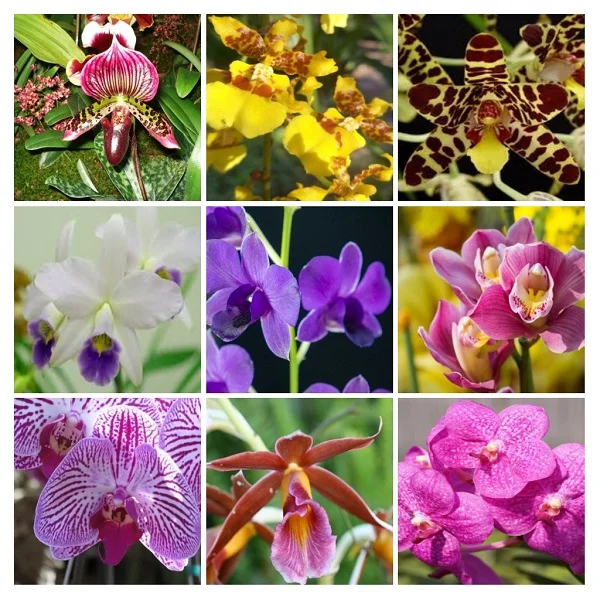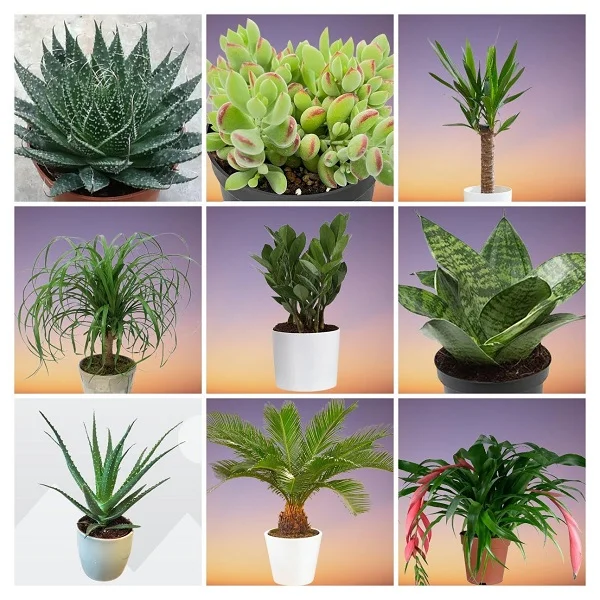Aechmea Bromeliads (Urn Plants) Indoor Care, Propagation, Problems and Remedies
Some links in this post may be affiliate links
Urn Plants (Aechmea Bromeliads) thrive in bright indirect light, warm and humid conditions, and consistently moist, rich, well-drained soil coupled with fortnightly feeding in the growing season.
Aechmea Bromeliads are popular plants grown for the beauty of their foliage and flowers. Urn Plants are typical Bromeliads with leathery, arching leaves and a distinct central 'vase' from which a stout stalk bearing a bold flower-head emerges.
The usual pattern for Aechmea Bromeliads is a rosette of leathery, strap-like foliage and flower-head which arises on a stalk from the cup-like center of rosette. The leaves are backward-arching and saw-edged (spiny) and require that you take care when handling.
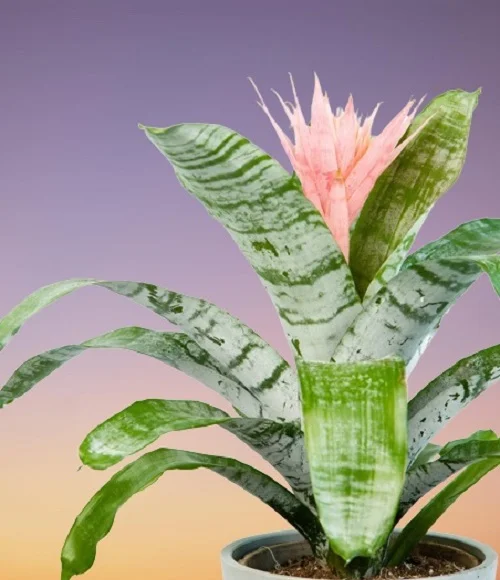
Botanical name: Aechmea
Family: Bromeliaceae
Sufamily: Bromelioideae
Common name: Urn Plants
Origin
There are about 250 species in the Aechmea genus which are native to the American Jungle from Mexico through South America, where they dwell among the Orchids on trees or on the forest floors.
The name Aechmea comes from the Greek word, 'aichme', which means 'spear' in reference to the spear-shaped flower head.
Flower
Aechmea Bromeliads may take 3-4 years to reach the maturity stage but the display may last upto 6 months. It is at maturity that they flower.
The display of the flower head is due to the presence of long-lasting showy bracts; true flowers are small and short-lived. Once the flower-head fades, the rosette of leaves begins to die and is replaced by offsets (pups) at the base of the plant.
Are Urn Plants toxic?
Urn Plants are non-toxic to humans, cats, dogs and other pets. Aechmea Bromeliads are among pet-safe plants that you may grow in the home. However, the leaves bear short spines which may cause physical injury if handled with bare hands. Always wear gloves when handling these plants to prevent injury.
Varieties
Several varieties of Aechmea Bromeliads are available for growing in the home. They include:
- Aechmea fasciata commonly called Urn plant is by far the most popular one.
- Aechmea chantinii commonly known as (Amazonian Zebra plant)
- Aechmea caudata
- Aechmea fulgens discolor commonly called (Coral Berry)
- Aechmea Foster's Favorite, a dwarf variety among many others.
Where to Buy
If you would like to add these pretty plants to your collection, they are readily available online on Etsy (Link to Etsy).
How do you care for an Aechmea Bromeliad indoors?
To care for an Aechmea Bromeliad indoors, provide bright indirect light, average warmth of 15-260C, humidity of 60-70% and consistently moist, fertile, well-drained, orchids potting soil coupled with fortnightly feeding during the growing season.
Urn Plants require pruning to keep the plant neat and to allow adequate room for the new plants (pups) to grow. Repotting may not be necessary as the plants have a small root system which is unlikely to fill the pot. Keep reading for more on these growing conditions and how to achieve them.
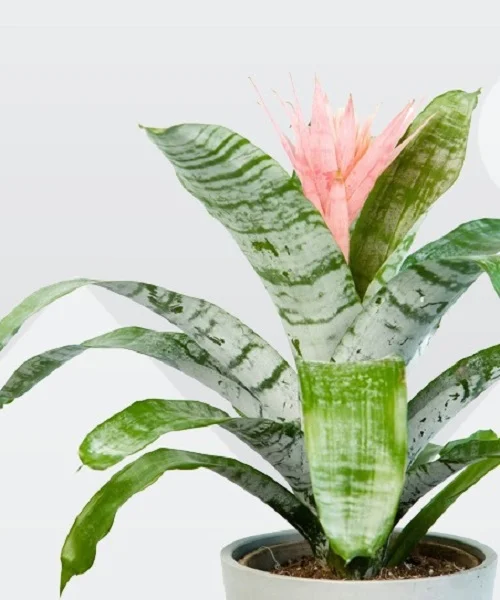
Watering
How often do you water Aechmea Bromeliads?
Like with other rosette bromeliads, Aechmea Bromeliads require the central 'vase' to be filled with water at all times. Empty and refill the 'vase' regularly to prevent growth of bacteria which may cause the water to become smelly.
Use only chlorine-free water as Urn Plants are sensitive to chlorine and other chemicals that may be dissolved in water.
Ensure that the water is at room temperature to prevent cold shock which can result in stunted growth and eventual death of the plant.
Moisten the soil only when it dries to keep the roots moist; avoid soggy soil as it can lead to rotting and death of the bromeliad.
Maintain good air circulation for the plant to discourage pest and disease infestations.
Light Requirements
Do Urn Plants like sun or shade?
Urn Plants like bright indirect light; keep them away from direct sunlight to avoid scorching the leaves.
Too little light may result in yellowing and long, droopy leaves. Where the natural lighting is not sufficient, you may use full spectrum grow lights to supplement it.
Rotate the pot regularly to ensure the plant receives light on all sides for even growth as well as prevent legginess.
Temperature and Humidity
Aechmea Bromeliads prefer an average warmth of 15-260C. However, to bring the plant to flower will require temperatures above 260C.
Keep the bromeliads away from drafts to avoid sudden changes in temperatures which can lead to stunted growth and eventual death of the plant.
Urn Plants require a humidity of 60-70% to thrive. If the humidity is too low, the plant will respond with brown leaf tips and edges.
To increase humidity, set the pot on a wet pebble tray or use a humidifier. You may also grow the plant in a well-lit bathroom, kitchen, laundry area and other humid areas in the home.
Aechmea Bromeliads can also be grown in a terrarium as a humid environment can be easily maintained inside a terrarium. Always ensure that there is good air circulation to prevent fungal diseases.
Potting medium
The best soil for Aechmea Bromeliads is a loose, fertile, free-draining bark soil to prevent it from getting soggy while providing the required nutrients. Most potting mixes designed for orchids are ideal for these plants.
Fertilizer
Feed your Aechmea Bromeliads with a liquid fertilizer (foliar feed) every 2 weeks in spring and summer for a lush growth.
Do not feed in fall and winter as growth is minimal at this time and feeding at this time may cause fertilizer burn and eventual death of the plant.
Repotting
Repotting Aechmea Bromeliad is not necessary as its roots are tiny and are unlikely to fill the pot. Use a shallow heavy pot to prevent it from toppling over as it can become top-heavy. In addition provide it with support to help keep it upright. Take a look at these ceramic pots with drainage holes on Amazon.
Pruning
How to prune an Urn Plant?
Pruning Urn Plant involves removal of dead leaves to keep the plant neat and tidy while allowing adequate room for the new plants (pups) to grow.
Cut away the dead foliage at the base with a sharp, clean knife or a pair of pruning scissors to avoid unnecessary injury as well as minimize disease infestations.
Aechmea Bromeliads Propagation
How do you propagate Urn Plants?
Urn Plants are propagated from pups (offsets) appearing at the base of the plant. Propagation is best done in spring to early summer when the plant is in active growth.
Propagating Aechmea Bromeliad from pups
- When the Urn Plant pup (offset) is several months old or 1/3 to 1/2 the height of mother plant, it is ideal time to seperate it from its mother.
- With a sterilized sharp knife or scissors, cut the pup away from the mother. Ensure that the offset has some roots attached to it to hasten establishment.
- Select a shallow heavy pot to prevent the pup from toppling over as it can become top-heavy.
- Plant the pup shallowly in loose, free-draining, bark soil and moisten the soil lightly.
- Give the offset good support to prevent it from toppling over.
- Place the set up in a warm, well-lit place away from direct sunlight to prevent scorching.
- Maintain the soil moist through out and allow the new plant to be well established after which you can begin routine care.
Related Content: How to Propagate Bromeliads from Pups.

Aechmea Bromeliads Problems & Solutions
Aechmea Bromeliads (Urn Plants) problems are plant dying, drooping leaves, brown leaf tips, brown leaf patches, pests and diseases. Keep readin for more on these problems and their solutions.
Plant dying
There are two reasons why your Urn Plant is dying:
1. If the Urn Plant has flowered, then rotting and death of rosette which bore the flower-stalk is natural. This is to give room for the growth of new plants (pups) which form at the base of the plant.
Remove the dead foliage by cutting at the base with a sharp, clean knife or a pair of scissors.
2. If the Aechmea Bromeliad has not flowered, then root-rot brought about by soggy soil is the cause of its death.
How to fix it
- Carefully slip the plant out of its pot and inspect the roots; brown-black mushy roots indicate root-rot, trim them off.
- Treat the healthy roots with a fungicidal solution as instructed by the manufacturer.
- Disinfect the pot with the fungicidal solution or use a fresh pot to repot the plant in fresh free-draining soil.
- Do not water the plant immediately; keep it dry for a few days before resuming watering.
Dark, soft and drooping leaves
Dark, soft and drooping leaves on Urn Plants are caused by too little light.
How to fix it
- Move the plant to a brighter spot where it will receive bright indirect light, away from direct sunlight.
- Instal a grow light if the natural lighting is inadequate.
Brown leaf tips
Brown leaf tips on Aechmea Bromeliads are caused by too dry air resulting in too low humidity.
How to fix it
- Set the pot on a wet pebble tray, group the plants together or use a cool mist humidifier to raise humidity.
- Grow the plant in a well-lit bathroom, kitchen, laundry area and other humid areas in the home.
Brown leaf patches
Pale, brown leaf patches on Urn Plants are sunscorch marks due to exposure of the plant to hot direct sunshine.
How to fix it
- Shield the plant from direct sunlight by installing a light curtain to filter the light.
- Move the plant to a more shaded spot.
Pests
Common pests on Aechmea Bromeliads are scales and mealy bugs which are prevalent in dry conditions.
How to fix it
- Isolate the affected plant to prevent spread to other plants.
- Treat the affected plant with neem oil or insecticidal soap as indicated by the manufacturers.
- To discourage pest infestations, increase humidity by setting the pot on a wet pebble tray or use a humidifier.
You liked it? Share on social media.
Related Content
Amazon Associates Disclosure
Homeplantsguide.com is a participant in the Amazon Services LLC Associates Program, an affiliate advertising program designed to provide a means for sites to earn advertising fees by advertising and linking to amazon.com.
